Discovering the Historical Richness of Schönbrunn Palace
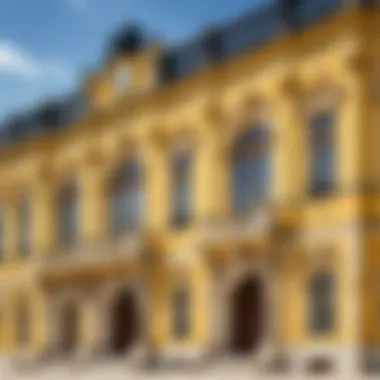
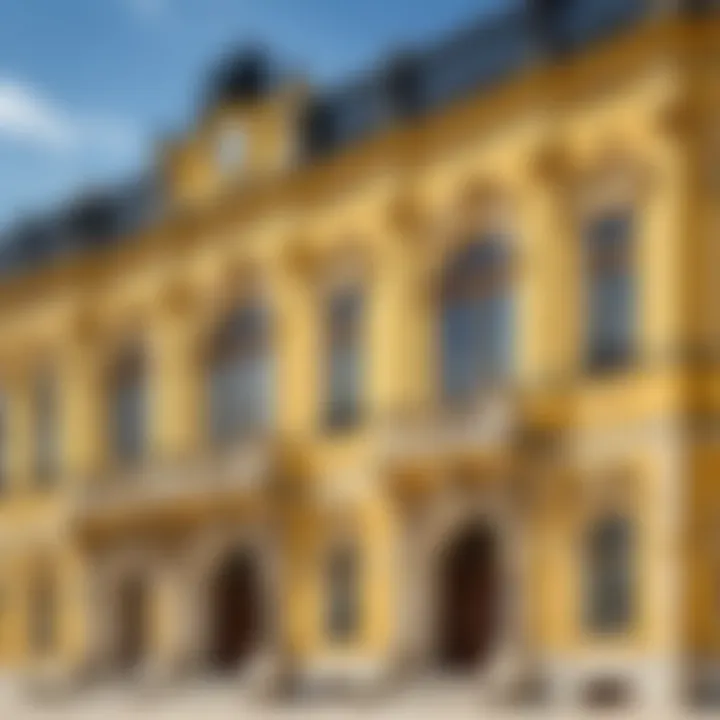
Intro
Nestled in the heart of Vienna, the Schönbrunn Palace Complex is a stunning blend of history, architecture, and lush gardens. It has been a witness to centuries of European turmoil and triumph, shaping not just Austria, but the very fabric of European history. From its grand baroque design to its meticulously manicured landscapes, this UNESCO World Heritage Site has an allure that transcends time. As you explore these iconic grounds, you’ll find that every corner tells a story, waiting for the curious traveler to listen.
Schönbrunn Palace is not merely a relic of the past; it stands today as a vibrant cultural touchstone. For those with a penchant for travel, this isn’t just a sightseeing spot, it’s an invitation to delve deep into the Austrian psyche. Whether you’re an experienced traveler or just starting out, Schönbrunn offers something for everyone.
"Schönbrunn is not just a palace; it is a journey back in time, wrapped in beauty and history."
From the opulent rooms filled with exquisite art to the serene gardens that boast a blend of natural beauty and architectural prowess, each aspect reveals layers of significance. As we guide you through this multifaceted treasure, expect to learn not just about its beauty, but the little-known tales that make this palace a vital piece of Austria’s heritage.
In the sections that follow, we will unfold the palace's story, focusing on its unique aspects, providing essential travel tips, and exploring how to fully embrace the experience this grand complex has to offer.
Historical Background
Understanding the historical background of Schönbrunn Palace is pivotal for grasping its significance in Austrian culture and its role as a UNESCO World Heritage Site. This compact overview takes readers through the origins, the influences that shaped its architectural splendor, and the key historical events that mark its narrative. Not only does this section offer a glimpse into the past, but it also lays the groundwork for appreciating the palace's broader cultural impact.
Origins of Schönbrunn
The inception of Schönbrunn can be traced back to the 16th century when it began as a modest hunting lodge. Nestled within the vast Viennese woodlands, the site was initially chosen for its natural beauty and strategic location. Over the decades, it transformed dramatically; by the time of the Habsburgs, Schönbrunn evolved from a simple lodge to a magnificent palace. A turning point occurred in the late 17th century when Emperor Leopold I commissioned substantial renovations. These changes weren’t just skin-deep—they symbolized a burgeoning imperial aspiration. The name "Schönbrunn," translating to "beautiful spring," hints at the palatial gardens that would come to encapsulate its charm.
The Habsburg Dynasty's Influence
The Habsburg dynasty played a crucial role in shaping Schönbrunn into the majestic structure it is today. This dynasty, which ruled large swathes of Europe for centuries, saw Schönbrunn become their summer residence. The imperial family poured resources into expanding and beautifying the estate. Maria Theresa, one of the most notable figures, invested her efforts in enhancing both the architecture and the gardens, turning it into an emblem of power and elegance. Her influence extended beyond aesthetics—she fostered an environment where art, culture, and politics intertwined, which substantially enriched the palace’s heritage.
Key Historical Events
Several key events provide the backdrop for Schönbrunn’s storied past. The palace was the site of important treaties, such as the Treaty of Schönbrunn in 1809 that reshaped Europe’s borders after the Napoleonic Wars. Additionally, the palace hosted numerous royal festivities and significant gatherings, which were pivotal in diplomatic relations. In the latter half of the 20th century, Schönbrunn took on new significance as it transitioned from a royal stronghold to a tourist attraction, reflecting Austria’s cultural renaissance.
"Schönbrunn is not just a palace; it's a chronicle of power, beauty, and the myriad narratives of a nation."
These historical intricacies, from its origins to pivotal events, underscore Schönbrunn’s profound place within Austrian heritage, setting a stage for deeper exploration in the subsequent sections.
Architectural Significance
The architectural significance of Schönbrunn Palace goes beyond simple aesthetics; it encapsulates a narrative of power, culture, and innovation from the Baroque period to modernity. By examining the architectural details, styles, and influences present in the complex, one can appreciate not only the grandeur of its buildings but also the socio-political context that gave rise to such a masterpiece. Architecture here is not merely a backdrop but an active player in the story of the Habsburgs and their impact on Austria's cultural landscape.
Baroque Architecture
Baroque architecture, dominant in the 17th and 18th centuries across Europe, is characterized by its dramatic use of space, ornate detailing, and a penchant for grandeur. Schönbrunn Palace stands as a prime example of this style, which sought to evoke an emotional response from observers, combining artistic expression with architectural precision.
The facade of the palace features intricate stucco work, columns, and expansive windows that reflect the sunlight beautifully. The layout exudes a sense of balance and harmony, which is particularly evident in the symmetrical arrangement of its numerous wings surrounding the main building. The use of bold colors and elaborate embellishments can transport one back to a time of opulence, where architecture was a means of showcasing power.
Furthermore, landscapes were designed to complement this architectural grandeur. The gardens, planned alongside the palace, echo the meticulous designs typical of Baroque gardens, which were intended to express control over nature.
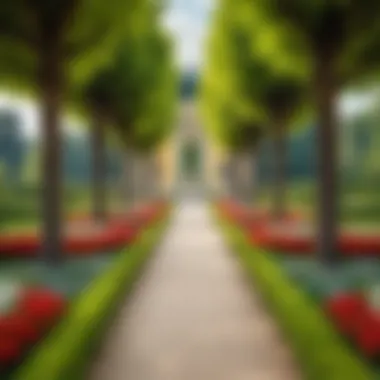
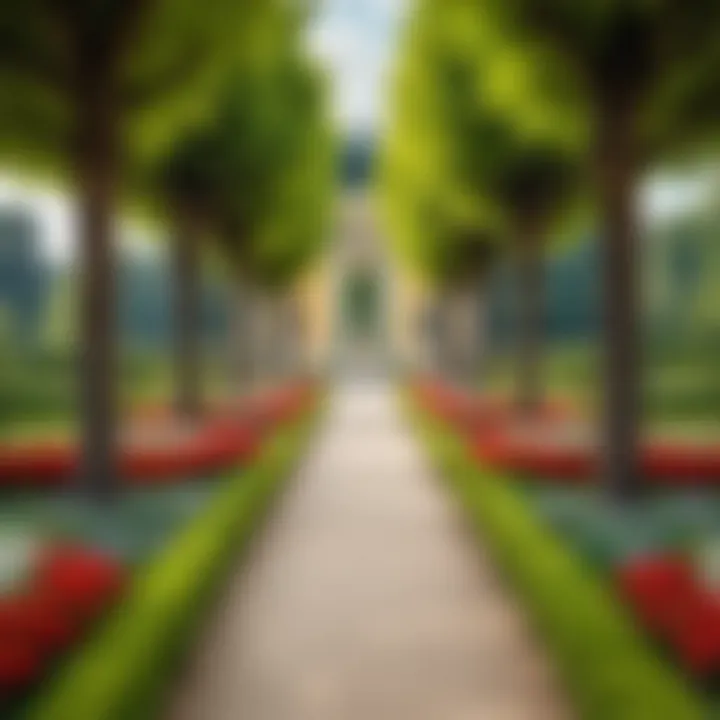
Interior Design Elements
Stepping inside Schönbrunn, the visitor encounters an array of opulent rooms that are reflections of the artistic trends of their time. The interior design elements within the palace are carefully curated—a composite of rich tapestries, intricate wooden paneling, and frescoed ceilings that tell stories of mythology and history.
Each room adheres to a distinct theme, yet all maintain an underlying grandeur showcasing the lifestyle of the Habsburg family. For instance, the Great Gallery is a highlight, with its vaulted ceilings adorned with stunning paintings. It serves not only as a feast for the eyes but also as a space where politics and culture intertwined during grand balls and gatherings.
Furthermore, the exquisite furniture and decorative arts within these rooms reveal the glamorous lifestyle that once flourished here. They serve as reminders of the era's craftsmanship, with unique pieces that are both functional and artistic in nature.
Notable Architects and Artists
The creation of Schönbrunn Palace involved collaboration between several key figures, each of whom contributed their unique talent and vision. Architect Johann Bernhard Fischer von Erlach is a name that looms large in the story of the palace’s design. His approach was innovative for his time; melding classical elements with new interpretations of Baroque style, he laid the groundwork for what would become one of Vienna's most iconic structures.
Additionally, painters like Daniel Gran lent their artistic flair to the palace, leaving behind a legacy of breathtaking frescoes that enhance the ambiance of the various halls. The contributions of these skilled architects and artists not only shaped the physical appearance of the palace but also influenced broader architectural trends throughout Austria and beyond.
As one wanders through Schönbrunn, it becomes clear that the architectural significance is layered with the stories of the individual creators, the cultural movements they were part of, and the historical context in which they operated. This multifaceted architectural narrative invites visitors to delve deeper into the rich past of not just these walls, but the very fabric of Austrian cultural heritage.
"Schönbrunn is more than just an architectural marvel; it is a living museum that tells the story of Austria's evolution through art and design."
In its essence, the architectural significance of Schönbrunn Palace represents an intricate weave of aesthetics, history, and identity that continues to inspire and educate.
The Schönbrunn Gardens
The gardens of Schönbrunn Palace are not merely an extension of the grand structure but a mesmerizing realm in their own right. They unfold like a carefully scripted play, where each scene reveals a fresh aspect of Austria's elegant past. Covering around 1.2 kilometers, the gardens are designed with precision and creativity that embodies the spirit of the Baroque era.
Design and Layout
The gardens follow a symmetrical design that draws visitors into a world where nature and architecture collaborate seamlessly. The immediate impression is one of order and harmony, with paths that meander through meticulously clipped hedges and vibrant flowerbeds. Each garden section serves a specific purpose, contributing to the overall aesthetic.
Main features include the elegant flowerbeds, the impressive Great Parterre, and numerous fountains that punctuate the landscape with splashes of water and light. You’ll find yourself strolling through the tree-lined pathways—each corner revealing another charming view of the palace, making it seem as if it’s painted on a canvas of green.
"The design of the gardens reflects the ideals of Enlightenment: rationality and beauty intertwined in nature's embrace."
Walking the gardens is akin to stepping into a living artwork, crafted with no rush, allowing one to savor each moment. Certain areas are designed for quiet reflection, while others invite interaction and activity, showcasing the versatility of the landscape.
Symbolism in Landscaping
The design elements in Schönbrunn's gardens carry deeper meanings. Much like a poem written in flora, every aspect from the flower choices to the arrangement has a story to tell. The use of geometric shapes symbolizes the order and control of nature, a fundamental tenet during the Baroque period.
Moreover, the carefully crafted hedges can be seen as a statement of dominance over nature— taming wild growth to create an unparalleled aesthetic. Flower color choices evoke emotions; vibrant reds and yellows reflect joy and vitality, while soothing greens contribute to tranquility. Each stroll through the garden is a chance to uncover these layered meanings, creating a personal connection with the landscape.
The Gloriette: An Architectural Highlight
Among the various elements within the gardens, the Gloriette stands out as a striking architectural feature. Perched atop a gentle hill, this structure not only serves as a lookout point but also symbolizes the prosperity and power of the Habsburgs. Designed in the 18th century, the Gloriette is embellished with elegant columns and a stunning central arch.
From the top, visitors can enjoy breathtaking views of the palace below as well as the sprawling expanse of gardens that stretch to the horizon. It’s a perfect spot to pause and absorb the grandeur of Schönbrunn, contemplating the relationship between humans and nature.
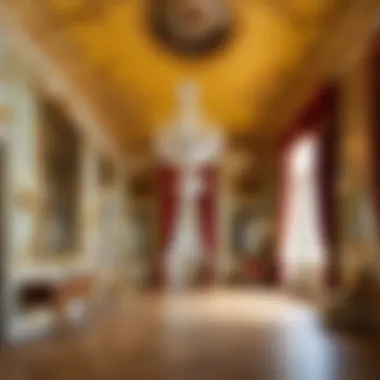
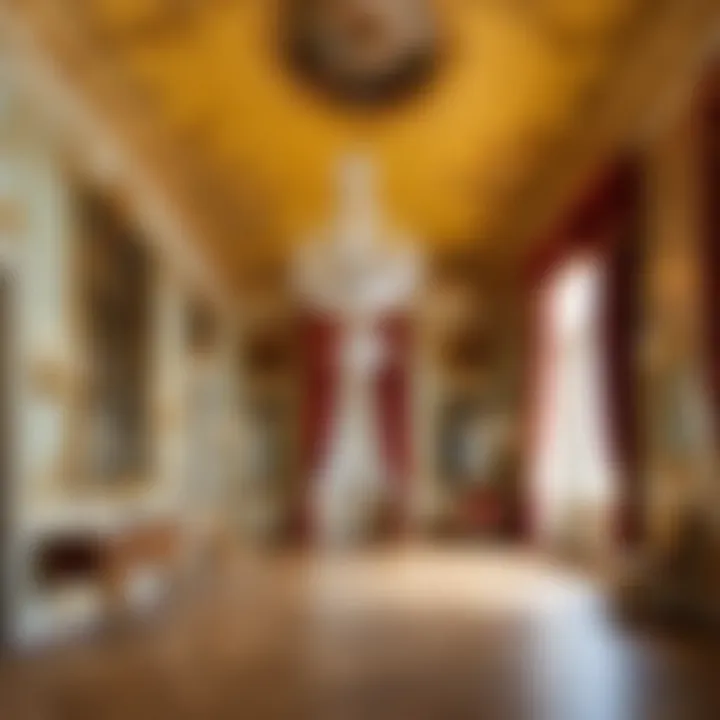
Cultural Impact
The significance of the Schönbrunn Palace Complex extends far beyond its architectural grandeur and lush gardens; it is an embodiment of cultural evolution in Austria. The palace, with its opulence and history, plays a vital role in shaping the artistic and social identity of the nation. Visitors not only witness the artistic feats of past masters but also engage in a living culture that continues to thrive.
Art and Music in Schönbrunn
Schönbrunn has served as an esteemed backdrop for countless artistic endeavors, especially in music. Composers such as Wolfgang Amadeus Mozart graced its halls with performances that echoed the emotions of the Viennese court. Indeed, the palace hosted many notable concerts, transforming it into a cultural hub of its time. These performances are more than mere notes on a page; they are the lifeblood of a vibrant musical heritage that continues to influence contemporary artists.
The atmosphere within Schönbrunn is steeped in musical legacy. Many tourists, while wandering its historic halls, can almost hear the melodies of the past dancing through time. In addition, the palace gardens serve as the perfect setting for modern-day concerts, bridging classical tradition and contemporary expression.
Schönbrunn in Popular Culture
The allure of Schönbrunn has not escaped the cameras. It has been featured in films, documentaries, and TV shows, making its mark in popular culture. From historical dramas to travel documentaries, the palace paints a picture of Austria's regal history that captivates audiences worldwide. Films like "The Sound of Music" make passing references that bring to mind the grandeur of this residence, albeit fictional, while many travel vlogs showcase the beauty and splendor of the complex for a new generation of explorers.
- Key Examples in Popular Culture:
- Film appearances: "The Third Man"
- Documentaries showcasing its history
- Travel blogs featuring its gardens and interior
These representations serve to inspire interest and curiosity, drawing millions of tourists eager to experience the beauty they've seen on screen.
Educational and Research Programs
Schönbrunn also opens its doors to academia, offering educational programs designed to deepen understanding of its historical and cultural significance. Schools often organize trips for students, allowing them to connect with Austria's rich past firsthand. The palace engages with scholars through various research initiatives that analyze its extensive art collections, architecture, and botany.
Such efforts highlight a commitment to preserving knowledge for future generations. The preservation of both tangible and intangible aspects of culture, including folklore and traditional practices, plays a crucial role in keeping the Schönbrunn spirit alive.
"Schönbrunn is not just a palace; it’s a living testament to Austria's narrative, encouraging the celebration of its past and the inspiration for its future."
In sum, the cultural impact of the Schönbrunn Palace Complex is multi-dimensional. It serves as a site of artistic inspiration, a canvas painted by composers, filmmakers, and educators alike. With each passing year, it continues to shape and inform the cultural landscape of Austria, allowing both locals and visitors to forge connections to a shared heritage.
Tourism at Schönbrunn
Tourism at Schönbrunn plays a pivotal role in not just preserving the site but also in showcasing its significant cultural heritage. As a renowned destination, Schönbrunn attracts millions each year, providing visitors a peek into the rich tapestries of Austria's past. More than just a pretty face, this palace complex serves as an educational hub, linking present to history, offering insights into the Habsburg dynasty’s majesty. The importance of tourism lies not only in the personal experiences gained but also in the economic benefits it brings, fostering local communities around the site.
Visitor Information and Accessibility
Navigating Schönbrunn is relatively straightforward, thanks to its well-designed facilities. For starters, using public transport is a breeze, with the U4 subway line stopping directly at the Schönbrunn station. For those who prefer driving, ample parking spaces exist, albeit they come at a fee. Consideration of transport can enhance your visit—getting there early can save time and give you a peaceful start to your exploration.
Visitor information is readily available from staff at the entrance or through digital guides that can be accessed via smartphones. Additionally, helpful maps illustrate key locations within the palace and gardens, ensuring fewer chances of losing one’s way in the vast grounds.
"The essence of Schönbrunn is best grasped when you take your time; allow the beauty of this historical site to capture your senses."
Guided Tours and Experiences
Guided tours at Schönbrunn are tailored to fit various interests, making it easier for tourists to engage at their own level. From general audio guides to specialized tours focusing on art or historical significance, there is something for everyone. Moreover, experiences go beyond just walking in and looking around; they invite you to step into the world of the Habsburgs.

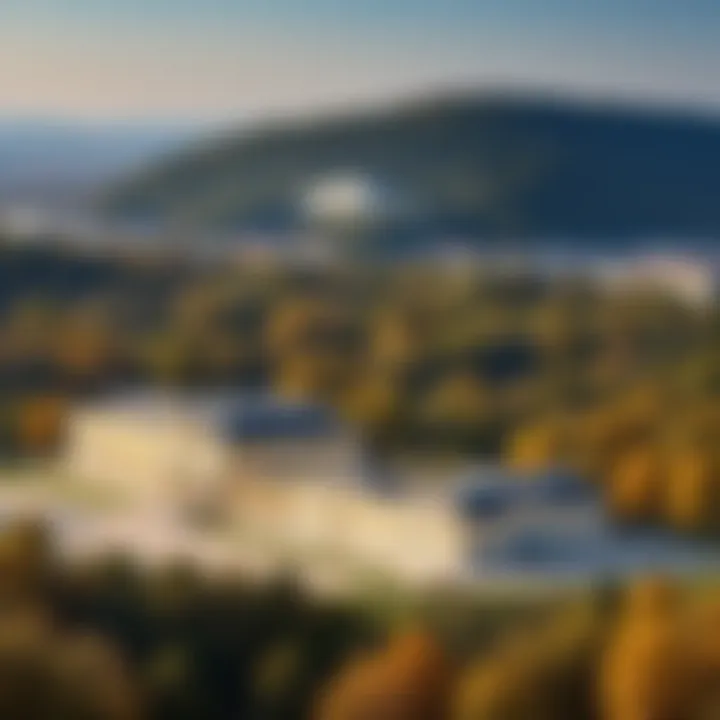
One popular option is the self-guided audio tour. Visitors can take their time and delve deeper into the history as they stroll through rooms like the Great Gallery or the Hall of Mirrors, which a countless number of royals have walked through.
Annual Events and Festivals
Schönbrunn is not just a historical site; it also thrives with life through various annual events. The gardens come alive during spring with the Blossoming Festival, which showcases exquisite flowers planted throughout the park. Another notable event is the Christmas Market, where visitors can sip warm Glühwein while browsing handcrafted gifts, all set against the backdrop of the magnificent palace.
Additionally, classical concerts are held periodically in the palace grounds, enriching the cultural experience further. These events are designed not only to entertain but also to educate, drawing attention to the artistic and cultural significance of the palace and its historical context.
Learn more about Schönbrunn Palace on Wikipedia
Join discussions on Schönbrunn on Reddit
Explore cultural heritage on Britannica
Visit the official Facebook page for updates
Preservation and Conservation
Preservation and conservation of the Schönbrunn Palace Complex play vital roles in maintaining its integrity and grandeur. Given the site’s long and storied history, the efforts to protect its architectural and cultural significance are paramount not only for local heritage but also for global recognition. With an influx of millions of tourists each year, it becomes increasingly essential to balance visitor engagement with safeguarding the delicate environments and features of this historic treasure.
Restoration Efforts
Over the years, a myriad of restoration projects have been undertaken to ensure that the palace retains its original charm. From meticulous repainting of interiors to repairing tile roofs that have endured the test of time, every effort is made to restore the aesthetics without compromising on artistic value. One striking example is the restoration of the Great Gallery, where specialists painstakingly worked to revive its opulent décor, ensuring that the paintings and decor are authentic to the Baroque period.
The challenges in restoration are numerous, including sourcing materials that match the original specifications. Many artisans today are well-versed in traditional techniques, allowing the palace's restoration efforts to bring in an authentic flavor. As these efforts continue, the palace not only preserves its past but also re-engages the public by showcasing the artistry of historical craftsmanship.
UNESCO World Heritage Status
Being designated as a UNESCO World Heritage Site in 1996 has elevated Schönbrunn’s status globally. This recognition emphasizes the importance of preservation and promotes increased funding and attention for its conservation. The heritage status not only allows for strengthened preservation policies but also highlights the collaborative efforts of local and international entities to protect such an emblematic location.
Furthermore, UNESCO’s guidelines ensure that the site maintains its historical integrity while adapting to modern challenges. This combination of old and new promotes a holistic approach to heritage management, allowing future generations to appreciate Schönbrunn's magnificence.
Sustainability Practices
Modern conservation efforts at Schönbrunn increasingly incorporate sustainability practices, aiming to minimize ecological footprints. Visitors may notice that various areas within the complex now feature environmentally friendly landscaping practices. For instance, seasonal planting is tailored to enhance biodiversity while reducing the need for chemical fertilizers.
Also, the palace has implemented energy-efficient systems to reduce consumption without detracting from the historical aesthetics. For example, LED lighting has replaced traditional bulbs in many areas. This careful balancing act maintains visual continuity while embracing contemporary sustainability concepts. This dual focus on conservation and sustainability helps establish a model for other historical sites to emulate, recognizing that preservation of the past and care for our planet can indeed go hand in hand.
Preservation of cultural landmarks is a shared global responsibility, and Schönbrunn stands as a testament to what dedicated collaboration can achieve.
Ending
The conclusion serves as a pivotal section in our exploration of Schönbrunn Palace, wrapping up the rich tapestry of its history, architecture, and cultural significance. It not only reflects on the various facets that make Schönbrunn a jewel of Vienna but also highlights its relevance in today’s world. This ancient site stands not as a relic of the past, but rather as a living, breathing entity that informs current discussions around cultural preservation and heritage tourism.
The Enduring Legacy of Schönbrunn
Schönbrunn Palace, a UNESCO World Heritage Site, embodies the splendors of Austria's imperial past. Its architectural grandeur and historical narratives offer a glimpse into the lives of the Habsburgs, nurturing an appreciation for history among visitors. The legacy is not merely confined to its walls and gardens; it pervades Austrian culture and identity. The palace continues to inspire art, literature, and music, keeping the spirit of the past vibrant. By preserving such a significant site, we ensure that future generations can partake in these stories, fostering a continuity of cultural understanding.
"Cultural heritage is at the heart of our identity; it is through places like Schönbrunn that we understand our past and shape our future."
This enduring legacy reminds us that appreciation for one's history reinforces national pride and community bonds.
Reflections on Cultural Heritage
Cultural heritage transcends the mere appreciation of historical artifacts. Schönbrunn Palace serves as a cornerstone for discussions about identity, tradition, and heritage conservation. It invites reflection on how society values its history and the ways it chooses to preserve, present, and reinterpret that history. This palace serves not only as a tourist attraction but also as a place of education, sparking dialogue about the significance of cultural heritage in contemporary society.
With increasing global interest in sustainable tourism, Schönbrunn also represents the challenges and opportunities in balancing heritage conservation with the economic benefits of tourism. These considerations are crucial as the world moves forward, aiming to maintain a connection with the past while adapting to modern realities. In this way, Schönbrunn contributes to an ongoing narrative about what it means to inherit and honor cultural legacies in a rapidly changing world.







